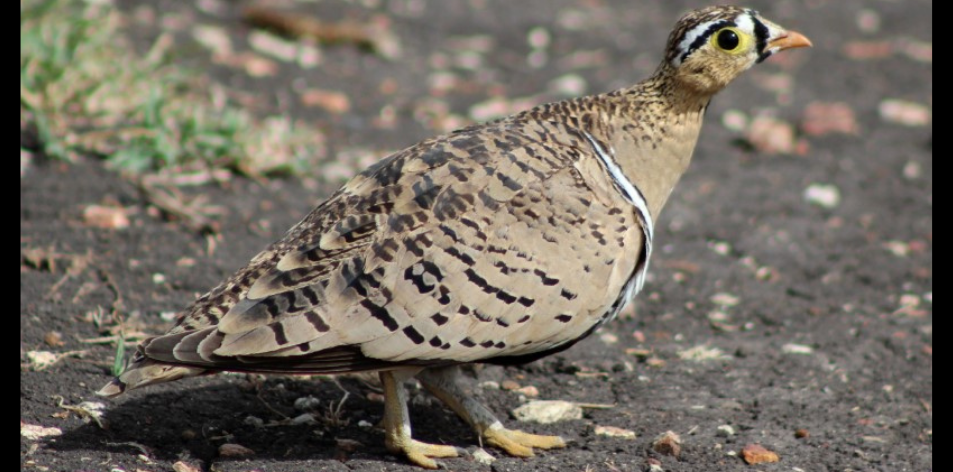
The Sandgrouse Safari!!!- Article by Gareth Jones
The Sandgrouse Safari At The Nairobi National Park
After another dry and dusty night, three tiny little black-faced sandgrouse chicks began to “cheep-cheep” to their parents that they were getting very thirsty. The sun was just beginning to rise when their father finally took off in a quest to find fresh drinking water while their mother continued to assist the chicks in their daily food-finding lessons. This sandgrouse “dad” has had to travel over long distances and face many dangers on a daily “sandgrouse safari” so that he could bring life-giving moisture to their chicks. After taking a few sips of thirst-quenching water, and lying down in the water to allow water droplets to stick onto his belly feathers, he immediately took off and headed straight back to the family. Sandgrouse belly feathers are unique in that they are specially adapted for absorbing water and retaining it, allowing adults, particularly males, to carry water to chicks that may be many miles away from watering holes. The amount of water that can be carried in this way is about 15 to 20 millilitres.
The black-faced sandgrouse (Pterocles decoratus) is a species of bird in the Pteroclidae family. A small and intricately marked sandgrouse. The distinctive male has a black mark across the face and onto the throat. The female is plainer. Both sexes have a dark belly and a white band on the breast. They are found in dry savanna and thorn scrub habitat. The female resembles some other sandgrouse but is identified by the combination of small size and the white mark on her breast. The call is a low-pitched “chut-to-la,” which is often given in flight. It is found in Ethiopia, Kenya, Somalia, Tanzania, and Uganda. There are sixteen known species of sandgrouse on earth. They are traditionally placed in two genera. The two central Asian species are classified as Syrrhaptes and the other fourteen species, from Africa and Asia, are placed in the genus Pterocles. They are ground-dwelling birds restricted to treeless, open country, such as plains, savannahs, and semi-deserts.
It is interesting to note that the black-faced sandgrouse is not officially listed as a resident species in the Nairobi National Park but rather as a rare seasonal visitor sighted mostly in the south of the park at places like the Athi basin dam. The yellow-throated sandgrouse (Pterocles gutturalis) is the only officially listed sandgrouse species that are resident in the Nairobi National Park, they are also an occasional sighting in the south of the park.
The breeding season of birds such as the sandgrouse which live in semi-arid tropics correlates with rainfall, thus the true extent or timing at which the breeding season will occur is highly unpredictable. Little is known about the duration and variation of the sandgrouse’s breeding in Kenya, although it is most likely to breed in the dry season following the long rains. Its reproductive organs are known to increase largely in size during the breeding season, despite the scarcity of breeding patterns.
The park has a great variety of birds and sandgrouse are one of the amazing creature found in the park. I always find it a joy to see birds when driving in the park, God has created such amazing diversity. When you go to the Nairobi National Park the Athi basin dam in particular can be very rewarding for sightings of many species of mammals and birds, including sandgrouse sightings in the early mornings and late afternoons, as they go on the daily “sandgrouse safari”!


